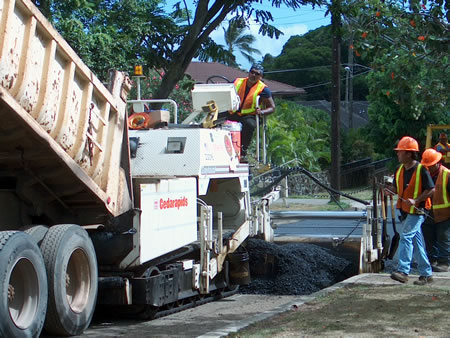If you buy into “sustainability” (and we do), how do you know if you are actually doing it and if you are, how do you get better at it? Many business leaders agree that “what gets measured gets managed” so, in order to best understand what you already do that is sustainable as well as plan for improvement, understanding how to measure sustainability proves to be important. There are several ways to measure sustainability, of which we will take a look at two of the most used: life cycle assessment and rating systems.
Life Cycle Assessment
Life cycle assessment (LCA) determines all the inputs and outputs of an industrial process (such as HMA paving) related to the environment. An LCA tries to account for everything in an industrial process from the gathering of raw materials to the point at which those materials are returned to the environment at end of life. You can use an LCA to determine things like the carbon footprint of a pavement or how much energy it consumes. In recent years a number of researchers examined pavements using LCAs and the results indicate some interesting rules-of-thumb:
- Materials production constitute about 60-80% of the energy use and CO2 emissions associated with pavement.
- Construction activities at the jobsite constitute less than 5% of the energy use and CO2 emissions associated with pavement.
- Transportation associated with construction (trucking) constitutes about 10-30% of the energy use and CO2 emissions associated with pavement.
What does this mean? LCA can serve as a guide to identify the important processes in HMA pavement construction that, if improved, give the biggest sustainability “bang for the buck.” Looking at the numbers, materials production is the biggest opportunity to implement sustainable practices.
LCAs are not without their problems, however. Although they can produce exact numbers they are often based on incomplete, outdated, irrelevant or even missing data. The truth is, we do not have enough quality information on things like HMA plant emissions, the effects of certain practices like warm mix asphalt and the use of raw materials (including water). Nonetheless, LCAs can provide useful information and we are starting to fill in some of the missing information.
Rating Systems
The other type of measurement that is becoming more widely accepted is the rating system. These systems typically list a series of sustainability best practices and then assign points to each one. Projects earn points for implementing these best practices and often some sort of “certification” is awarded based on total point value. LEED (Leadership in Energy and Environmental Design), which applies to buildings, is the most famous of these systems. There are points to be earned by HMA pavements in LEED but they are limited (about 3-8 out of 100 points, based on the system) and generally revolve around recycled content and porous pavements.
While the LEED rating system works well for building construction, a roadway rating system may serve the HMA paving industry much better. There are a number of early-stage efforts to make such a system, Greenroads (www.greenroads.org) is the one furthest along having issued the initial version of their system in January 2010. A system like Greenroads gives HMA pavements credit for their full array of sustainability features (including recycled content and porous pavement), but also giving credit for quality construction, long-life pavement design and pavement preservation. Based on what we know of those last 3 items, it is not surprising that a sustainable pavement project is likely to cost less than a more traditional one in the long run.
We’d like to see the HMA industry gain recognition for the many things it does already that foster sustainability. A big step towards this will be establishing a way to measure and manage sustainable practices, which will ultimately help us as an industry continue to decrease our environmental impact while increasing our profitability and competitive position.


